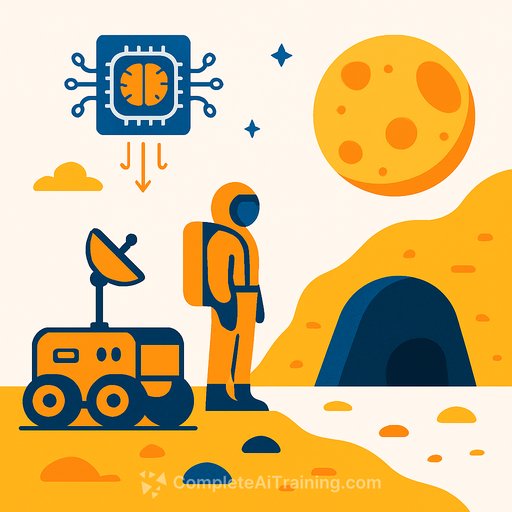AI Identifies Hidden Entrances on the Moon’s Surface
Artificial intelligence is proving to be a valuable tool in locating lunar pits and skylights—surface depressions and openings that lead to subsurface lava caves and tubes. These features are important for both robotic and human exploration, offering potential shelter and insight into the Moon’s volcanic past.
A recent study published in Icarus explored the use of machine learning to detect these openings more efficiently across the Moon’s volcanic regions, known as lunar maria. The goal was to improve upon the 16 pits and skylights already cataloged in the Lunar Pit Atlas.
How AI Models Were Trained
The research team trained several deep learning models using orbital images from the Moon and Mars. One key training example was the Mare Tranquillitatis pit, a well-studied crater with a radius of about 100 meters (328 feet) and a depth near 105 meters (344 feet).
The top-performing model, called ESSA (Entrances to Sub-Surface Areas), successfully identified two new skylights after analyzing just 1.92% of the lunar maria. The study suggests that since ESSA has scanned only about 0.23% of the Moon’s surface, there is significant potential for further discoveries.
- Focus on mare regions remains critical since these areas have well-defined boundaries and a higher likelihood of containing pits and skylights.
- With more processing time, ESSA could analyze larger maria such as Mare Frigoris, by systematically scanning latitude and longitude intervals.
Why Lunar Pits and Skylights Matter
Lunar pits and skylights offer access to underground lava tubes, which could provide natural shelter from the Moon’s harsh environment. Unlike Earth, the Moon lacks an atmosphere, ozone layer, and magnetic field, exposing astronauts to harmful solar and cosmic radiation.
These underground structures could serve as safe havens for future missions, much like lava tubes featured in the National Geographic series Mars. Mars shares similar challenges, making its lava tubes valuable for shielding explorers from radiation.
Looking Ahead: AI’s Role in Lunar Exploration
NASA’s Artemis program aims to return humans to the lunar surface soon, focusing on the south pole region. While that area is far from known lava caves, AI-driven identification of surface features like pits, skylights, water ice deposits, and other resources will be invaluable for future exploration and in-situ resource utilization.
Machine learning models continue to accelerate planetary science by quickly analyzing vast datasets to detect key features on planetary bodies. This approach extends beyond the Moon, applicable to Mars and other celestial objects both inside and outside our solar system.
The ongoing application of AI in planetary research promises to uncover new targets for exploration and resource development in the years to come.
For those interested in expanding their AI skills and applying them to fields like planetary science, explore a range of relevant courses and certifications at Complete AI Training.
Your membership also unlocks:






